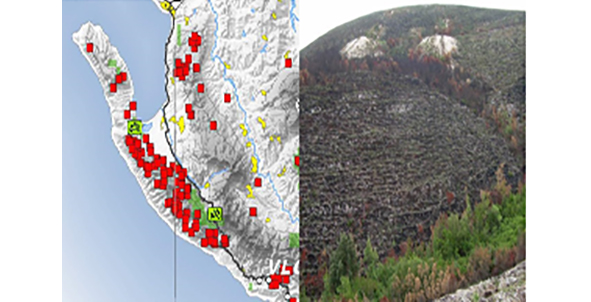Fires in natural systems and their impact on the environment in Albania
DOI:
https://doi.org/10.13133/2239-1002/18245Abstract
In recent years, globally, there has been an increase in the number of fires and the destruction of nature with environmental, social, and economic impacts. Even in Albania, fires are intense and widespread, threatening residential areas, life safety, property, natural and environmental ecosystems, etc. Fires endanger natural resources, forests, pastures, and agricultural lands, destruction of nature, biodiversity, landscape, flora, and fauna, and worsen the physical, chemical, and biological qualities of the soil and air due to the discharge of carbon and harmful chemicals formed during burning, intensification of erosion, etc. However, public awareness remains at a low level and fires are a repeated phenomenon. Therefore, the objective of this paper is to evaluate the environmental impacts caused by fires, the dimensions of the spread, the consequences, the prevention measures, and the necessary legal, administrative, and technical improvements. The frequency of fires in recent years has been developing at a high rate. In 2021, 329 fires were recorded, burning a total of 31,275 ha of land, in addition to other affected areas. Studies show that about 84% of fire events in Albanian forests in 2021 were caused by anthropogenic factors. Extinguishing the fires was difficult due to the mountainous terrain on ¾ of the surface, the type of vegetation, high slope, high temperature, and low rainfall during the summer, as well as the lack of tools. In the general area of the territory of 2,874,800 ha, natural systems (forests and pastures) and agricultural systems, which are endangered by fires, occupy about 80% of the surface. Exactly, for these reasons, the main alternative in the country remains the planning and implementation of fire prevention measures. The impact of climate change on weather conditions, towards repeated heat and droughts, contributes to favoring the spread of massive fires.

Downloads
Published
Issue
Section
License
Copyright (c) 2024 Periodico di Mineralogia

This work is licensed under a Creative Commons Attribution 4.0 International License.

